Kefine Quatio - Excellent Iem at Excellent Price
Pros:
- Excellent accessories package
- Excellent cable
- Excellent build quality
- Simple and industrial design (Subjective)
- Nozzles provide an actual change in sound
- Good bass quality
- Good Mids
- Good treble bite
Cons:
- The presence region gets too much on bad recordings (Silver Nozzle)
- The extension in the upper treble could have been better
- Not the widest stage
Specs And Driver Configuration
- Driver configuration: 2 DD + 2 BA
- Sensitivity: 107 ± 3 dB
- Impedance: 32Ω
- Shell Material: CNC Aluminium
Before starting the review, I want to thank Kefine for sending this iem for a review.
Accessories Package
The accessories package is excellent for the price. Things provided in the box are 1. Zipper carry case 2. Four different types of tips 3. Cable with 3.5mm replacement termination 4. Two nozzles.
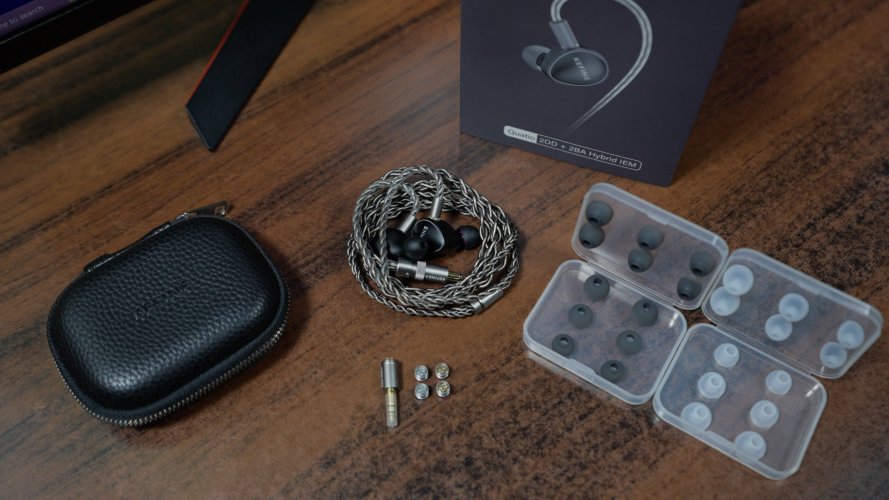
The carry case is very good, it’s built very well and feels premium. The cable is excellent too, it feels very premium and robust, easily one of the best cables provided in the segment. It also had the screw-down type interchangeable system, which is my preferred type of system. I also appreciate the generous selection of good-quality eartips included, great for newcomers to the hobby, since you can tip-roll to find the best fit and comfort.
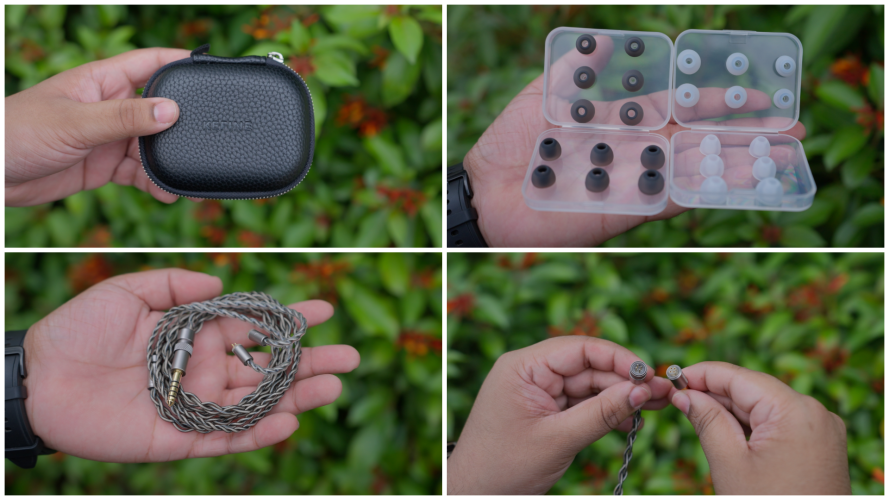
Aesthetics and Build Quality
The aesthetics of the Quatio are clean, simple, and very professional. Now, if you’re a fan of loud and blingy faceplate designs, you might find this a bit boring. But if you’re into a minimalist and industrial look, this will be right up your alley.
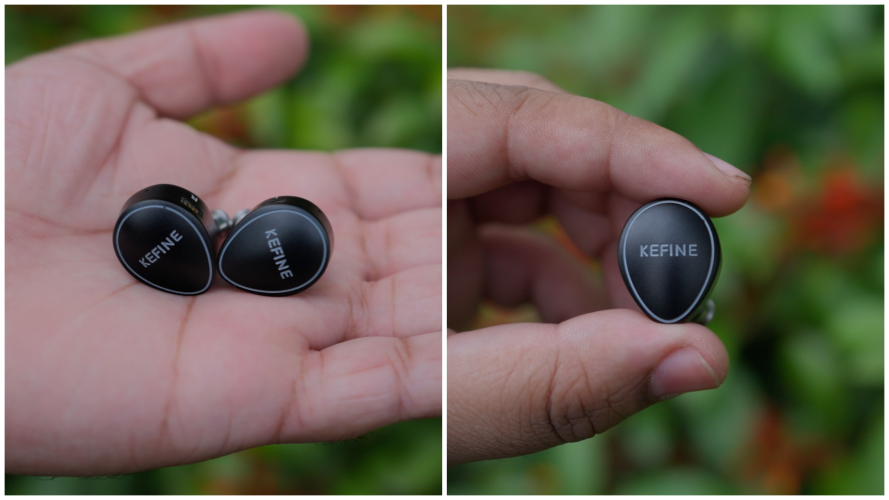
The build quality is excellent, the shells are made out of CNC-machined aluminium, so they feel very robust and premium. They also have a nice heft to them, which adds to the overall sense of quality.
Fit and Comfort
The fit and comfort of the IEM are quite good. While the shape might look a bit awkward at first, it doesn’t cause any issues in terms of how they wear. The shells are teardrop-shaped with angled nozzles, which help provide a secure and stable fit. There are no wings or custom moulding on the shells, yet the fit remains surprisingly solid. That said, the shells do stick out of the ear a little. Comfort-wise, they’re excellent; I can wear them for hours without any fatigue or discomfort.

Sources Used
To test the Quatio, I used the Fiio JM21 and Onix XI1. Both paired very well with it and powered it without issues. I would suggest you to pair with with a warmer leaning dac amp.
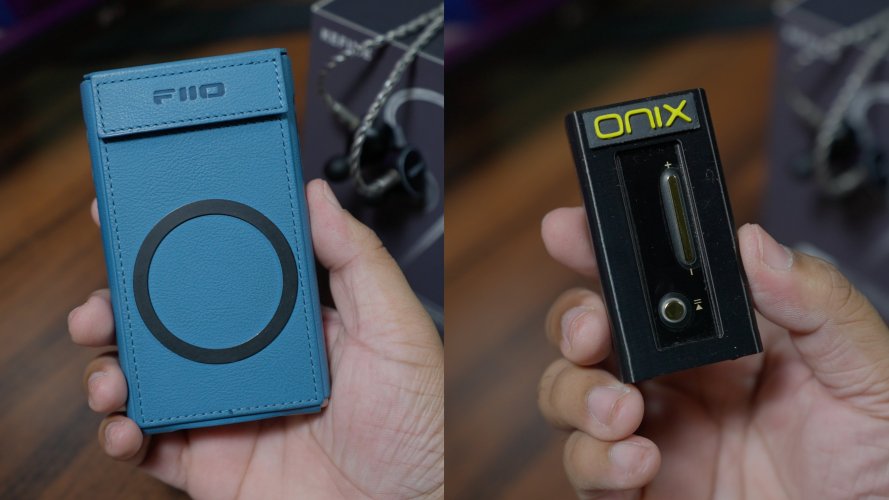
Sound
I used the Final E-type tips for my sound testing. Let’s start by talking about the stock sound signature of the quatio, it has a very tastefully done V-shaped sound signature.
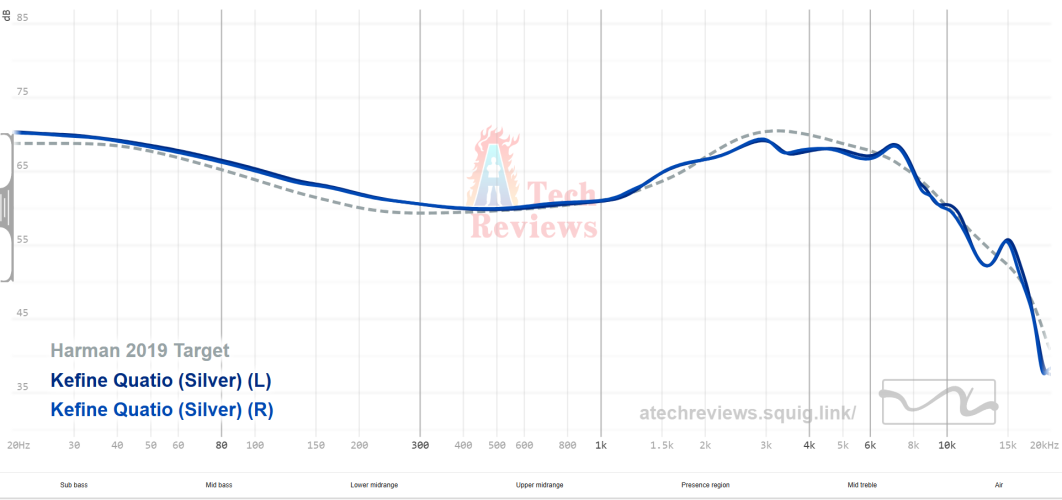
Bass
The bass on this set is very good; you won’t have any complaints with either the quality or the quantity. The bass profile leans more toward sub-bass than mid-bass, with a smooth transition between the two.
The sub-bass has very good texture and rumble, and the mid-bass thump and slam are also on point. The initial attack of the bass is crisp and well-defined, while the decay is slightly on the faster side, giving the bass a snappy and speedy character.
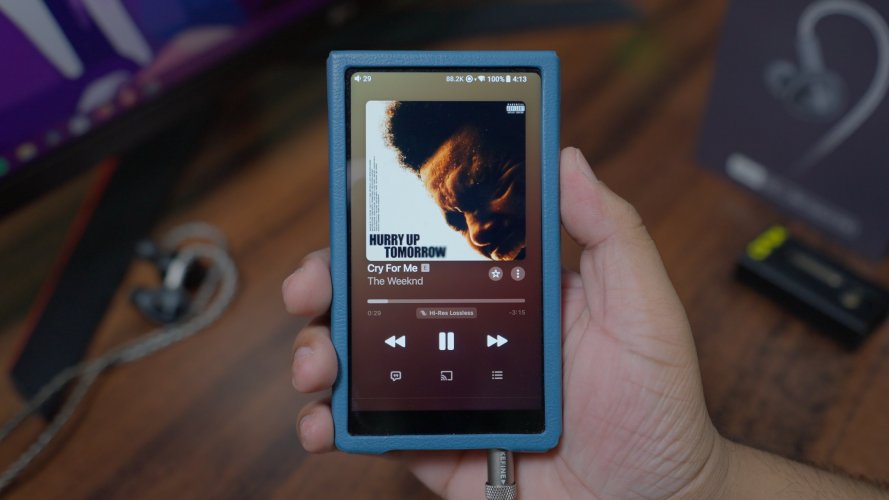
Mids
The mids are also well-tuned on this set. The mid-bass gradually transitions into the lower mids, adding a nice warmth and giving them enough heft and body to sound natural. The upper mids balance out the lower mids nicely, creating a cohesive and smooth presentation. Both male and female vocals sound very good here, with ample weight and extension.
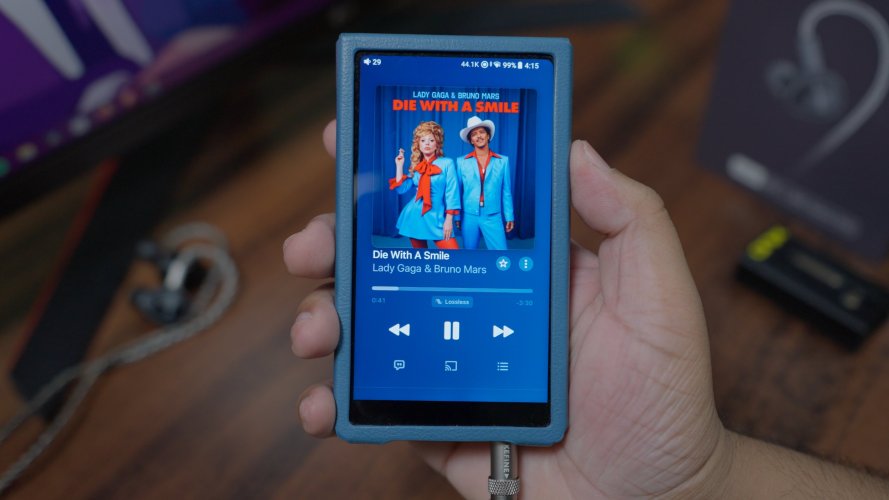
The one area that’s a bit of an issue for me is the presence region; the 4k 6k range feels a bit too forward for my taste. On poorly recorded tracks, certain “S” and “Ch” sounds can come across as slightly sibilant.
Treble
The treble is also done very well. Its very smooth. The mid-treble has a nice bite to it and sounds quite incisive. After that, it gently rolls off into the air region. The extension is decent, though I do wish there was a bit more energy up top to make the overall sound signature feel more airy and open.

Detail Retrieval and Technical Performance
The detail retrieval is very good for the price. Despite the slightly mellow upper treble, micro-detail retrieval is good; it presents subtle nuances in tracks quite well. Macro-detail retrieval is also solid, with a dynamic and punchy presentation. The soundstage is decent, not the widest, but it never feels cramped. Instrument separation, layering, and imaging are all handled well, adding to the overall technical performance.
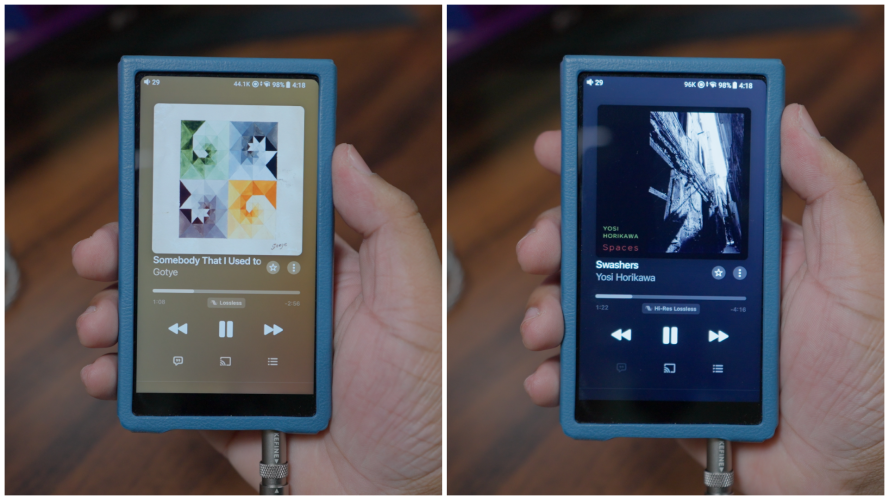
Nozzles
Nozzles actually make a difference in sound, you get two more distinct sound profiles. The nozzles are pretty easy to change, just srew to remove the old nozzle and screw on the new nozzle.

Let’s start with the gold nozzle . It makes the overall signature cleaner, more forward, and more intense. There’s a reduction in overall bass quantity, the bass shelf now follows the Harman target more closely and mid-bass is slightly reduced as well. The lower mids come across cleaner, but as a result, vocals, especially male vocals, lose a bit of weight and authority. The upper mids are slighly pushed forward, and the presence region is also elevated. These changes make the sound more intense. If you’re after more clarity and energy, the gold nozzle delivers, but for me, it can feel a bit too much.
The black nozzle is the opposite. It gives the sound a more relaxed, fun, and warmer presentation. The bass shelf is lifted, with both sub-bass and mid-bass slightly more emphasised. The upper mids around the 1.5k region are slightly pulled back, and there’s also a reduction in the presence region. Vocals sound a bit weightier and thicker with this nozzle. The black nozzle cuts down the intensity of the gold nozzle and provides a well-balanced, versatile tuning you can enjoy across genres.
Comparisons
Kefine Quatio Vs Juzear Defiant
The accessories included with both IEMs are quite good, but in my opinion, the Quatio has the edge. Its cable feels more premium, and it comes with a wider selection of eartips, which adds more flexibility for tip rolling.
Aesthetics are subjective. Defiant has a flashy, eye-catching faceplate that looks stunning, especially the rainbow version. In contrast, the Quatio opts for a more minimal and industrial design.
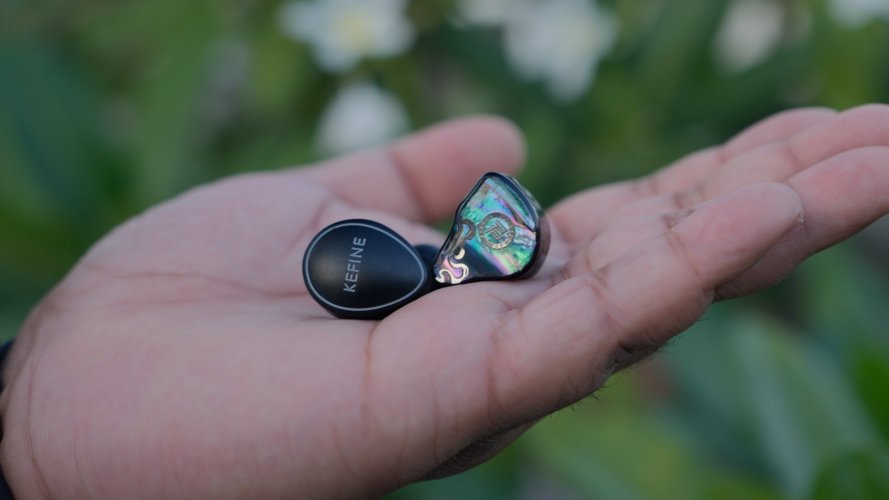
One area where the Quatio clearly wins is build quality. The metal shells feel more solid and premium compared to the Defiant.
Now, moving on to the sonic comparisons, both IEMs follow a V-shaped sound signature, but they execute it differently.
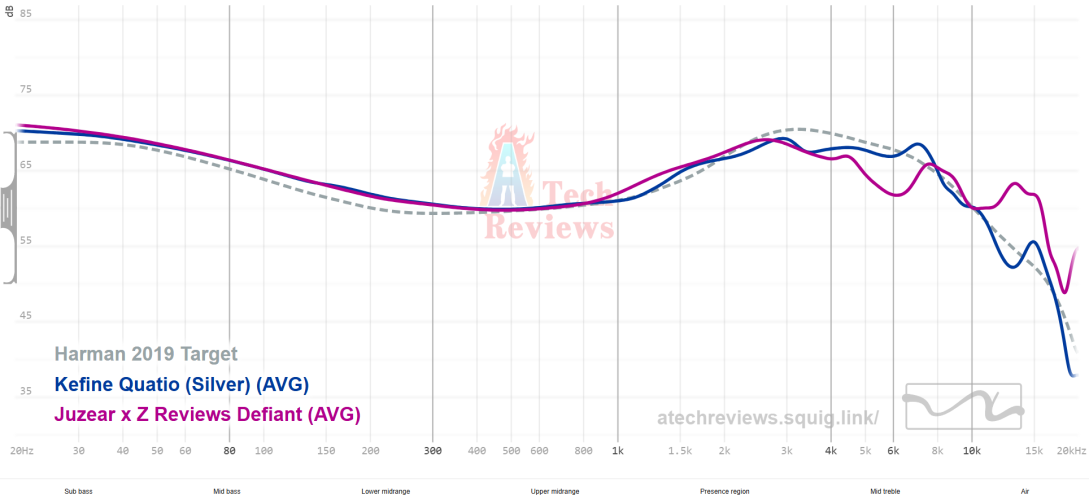
Bass quantity is similar on both sets. Quatio’s bass is snappier and faster, with better control and composure, while Defiant’s bass feels denser but tends to lose control on busier tracks, for example, in Limit to Your Love.
The lower mids on both have similar weight and body, but the upper mids on the Defiant are more forward compared to the Quatio. The presence region is slightly more relaxed on the Defiant, which makes vocals sound a bit smoother and less sharp than on the Quatio.
Treble presentation also differs Defiant has a noticeable boost in the air region, making it sound more airy. However, as I mentioned in the full review of the Defiant, it doesn’t come across as natural.
Detail retrieval is very close between the two, but I’d give a slight edge to the Quatio. As for soundstage, the Defiant offers a slightly wider stage.
Kefine Quatio Vs Celest Yaksha
The accessories are excellent on both. The stock cables are very good. Quatio comes with a swappable termination system, which is a great bonus, while Yaksha’s cable feels even thicker, sturdier, and more premium. So, I’d call this a tie.
Aesthetics follow the same story as with the Defiant; Yaksha has a more vibrant, colorful faceplate that stands out, while Quatio goes for a more basic, industrial look.
In terms of fit and comfort, I find the Quatio to be better. With the Yaksha, I had to tip-roll a bit to get a stable and secure fit.
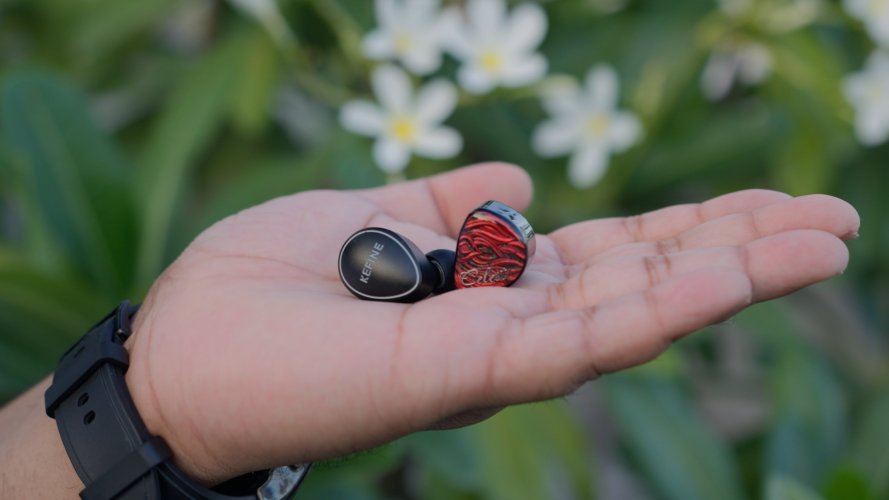
Build quality is excellent on both. Although the Yaksha uses resin shells, they feel very solid and premium thanks to the filled resin construction. That said, Quatio still has the edge here; its all-metal build just feels more robust and high-end. You really can’t beat metal in this regard.
Now onto the sonic comparison. The Yaksha has slightly less sub-bass than the Quatio, while the rest of the bass shelf is quite similar. Quatio clearly wins when it comes to bass quality, the sub-bass texture and mid-bass thump are noticeably better, and the bass attack is crisper and more defined.

Lower mids are similar on both, but the upper mids are slightly more forward on the Yaksha. The presence region is more relaxed on the Yaksha, which means no sibilance or fatigue, but it also lacks some of the vocal texture and bite that the Quatio delivers.
Treble quantity is similar on both, but the Quatio’s treble has more incisiveness and better bite, making it sound more energetic and engaging. When it comes to detail retrieval and overall technical performance, the Quatio also takes the lead.
Conclusion
Kefine has done it again; they’ve created a well-rounded IEM that sounds great, is built well, and comes with a solid accessories package. It competes strongly within its price class and offers more flexibility in tuning thanks to the well-implemented interchangeable nozzle system, which provides two distinct sound profiles.

That said, there are a couple of flaws worth mentioning. The presence region (4k–6k) can be a bit too forward on poorly recorded tracks, and the extension into the air region could’ve been better. But if those two things don’t bother you, I can confidently recommend this set.
![]()
















